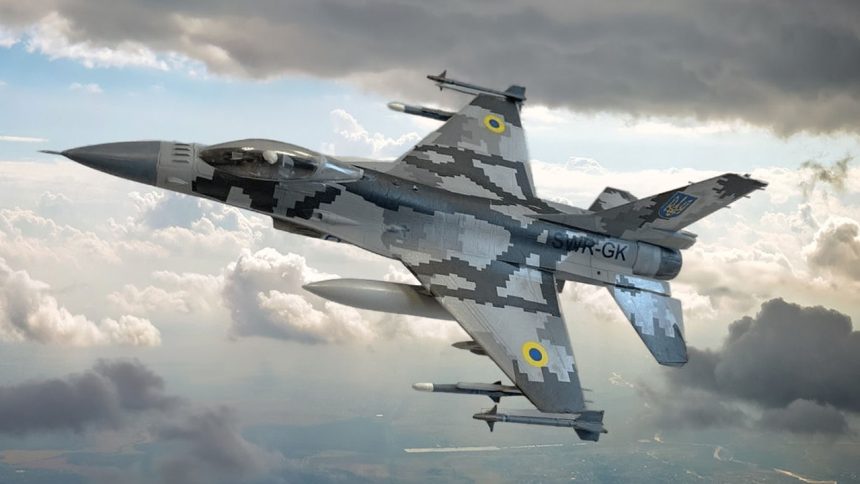Sources familiar with the matter reported that a small number of aircraft has been delivered, with a U.S. official providing further confirmation.
After a long wait, it appears that Ukraine has just received the first batch of F-16s provided by the international fighter jet coalition. The news, first disclosed by Bloomberg on Jul. 31, 2024, has also been confirmed by a U.S. official to the Associated Press.
According to people familiar with the matter, who spoke under condition of anonymity with Bloomberg, the deadline for the transfer of the first F-16s was the end of this July and it has been respected, although the number of jets is small. The sources also added that it is currently unknown if the fighters will be put immediately to use or if their entry into service will require more time.
While the news immediately started making the rounds, the Associated Press was able to obtain confirmation by an unnamed U.S. official, possibly speaking under condition of anonymity, but no additional details were provided. The Ukrainian government also has not confirmed the arrival of the first Vipers in country.
Earlier this month, the United States, the Netherlands and Denmark released a joint statement mentioning that the transfer of the F-16s was underway and that they would be operational by this summer. No additional details were provided due to operational security concerns, and things are possibly going to stay that way for a while, unless photos or videos start circulating.
The preparation for the arrival
Ukraine has been preparing for months for the arrival of the U.S.-made fighter jet, which reinforce the Ukrainian Air Force and supplement the Soviet-era MiG-29s and Su-27s. Among the preparations are measures to protect the new aircraft from Russian attacks while on the ground.
The strategy being developed by the Ukrainian Air Force involves the use of underground bunkers and dispersal of the aircraft across various airstrips, making it challenging for Russian forces to target the F-16s. No information is available about the existence of underground airbase facilities in Ukraine (and their creation is not quick), hence the most likely option appears that F-16s will be recovered inside concrete shelters at existing Ukrainian air bases.
The Ukrainian Air Force has long been conducting operations from austere airfields from highway strips and improvised airfields as part of its strategy to enhance operational flexibility and resilience amid ongoing conflict. Highway strips and improvised airfields offer alternative operating locations that are less vulnerable to detection and destruction by adversary forces.
Ukrainian pilots are being trained to use these unconventional airstrips effectively for some years now to build up the skills required to take off and land on shorter runways and navigate the challenges posed by non-standard facilities. So far, highway operations have involved Ukrainian aircraft that were designed to operate from austere airfields or have a small logistical footprint, like the Su-25 or the Su-27.
While F-16s can theoretically operate from improvised airfields, including highway strips or other unprepared surfaces, there are certain things consider, like the surface condition. In fact, the F-16 requires a solid surface to prevent damage to its landing gear and other components and, moreover, the surface needs to be clean, as the F-16 is prone to Foreign Object Damage (FOD) because of the large ventral air intake.
At the moment, training of Ukrainian pilots is underway in the UK, in the U.S., in Denmark and in Romania, depending on their flying experience. A European F-16 Training Centre (EFTC) at Baza 86 Aeriana Fetesti was established to train Romanian and Ukrainian pilots, as well as other regional F-16 operators with more 18 RNLAF (Royal Netherlands Air Force) F-16s, which remain property of the Dutch government, available for this purpose.
What the F-16 can do for Ukraine
Ukrainian Air Force Command’s chief of aviation, Brigadier General Serhiy Golubtsov, explained in June what to expect by the Western fighter jet. While mentioning that the F-16 is intricately linked to the optimum performance of the Western weapons already delivered to Ukraine, he also highlighted that these aircraft are not a “panacea” for air superiority.
In fact, the General said they should not expect anything unrealistic, as it will be difficult to gain air superiority with the aircraft alone. Instead, the effort is expected to be a much larger, complex undertaking with Electronic Warfare platforms and long-range radar detection aircraft, referring to the Swedish ASC 890 Airborne Early Warning aircraft.
The versatile, multirole jet will augment and replace the Soviet-era fighters tweaked to fire the weapons donated by the West, which however encountered some difficulties. These include the JDAM (Joint Direct Attack Munition), AGM-88 HARM (High-Speed Anti-Radiation Missile), ADM-160 MALD (Miniature Air-Launched Decoy) and the Storm Shadow/SCALP-EG ALCM (Air-Launched Cruise Missile).









